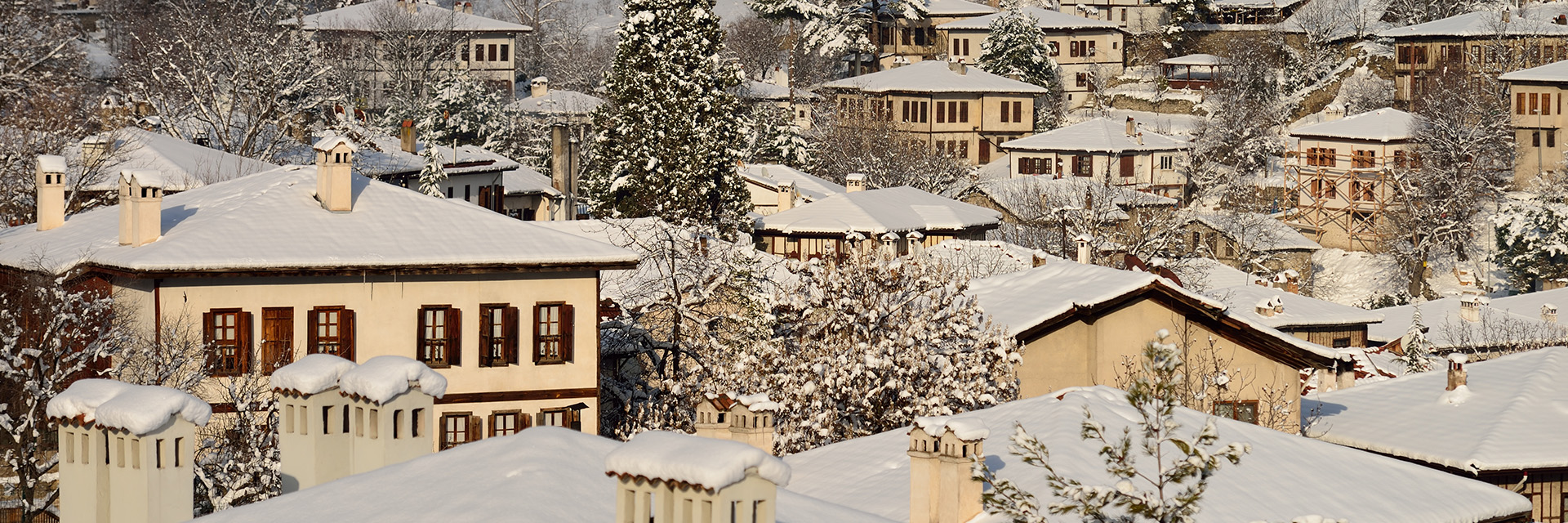
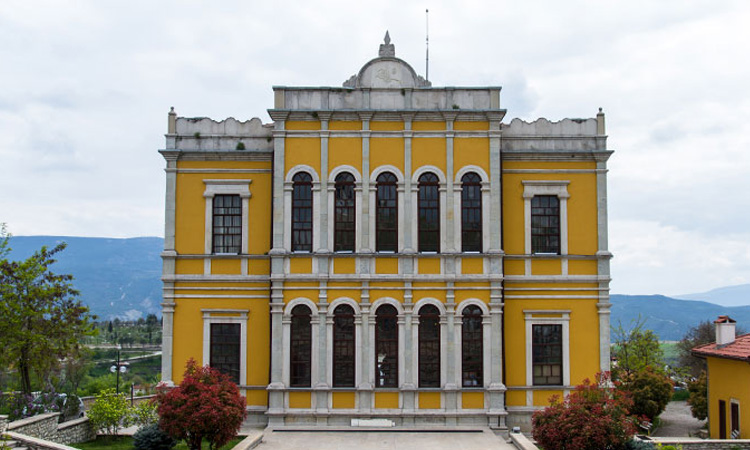
City Museum
The Historical City Museum was built on the hill known as fortress as Government Office in 1904 with the efforts of Enis Paşa, Governor of Kastamonu, and Ahmet Bey, district governor of that time. The museum shines out like a sun from the top of the hill while its architectural beauty inspires painters' art works.
The building made of ashlar Stones is composed of 3 floors, ground floor included. All information, documentation, article, visual material, audio and video records about Safranbolu can be found there.
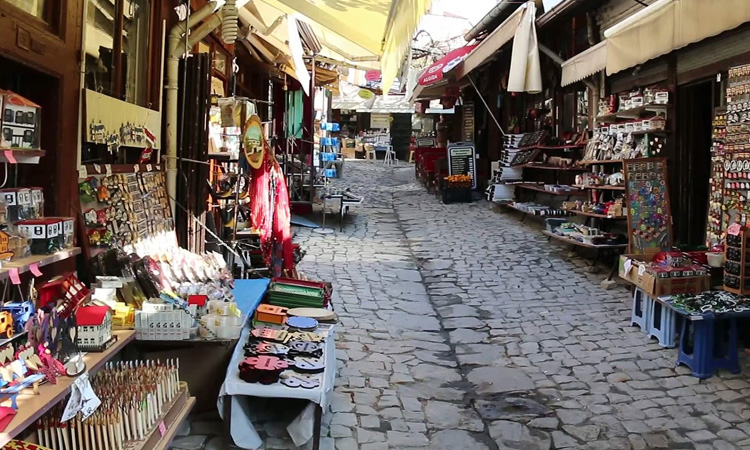
Old Bazaar
One of the most important piece of the city's history, the Old Bazaar is situated at the mere center of Safranbolu in a neighborhood characterized by long slopes and narrow sidewalks and has preserved its authenticity until nowadays. Khans (large commercial buildings) and hamams reflecting the vivid commercial activities of the Ottoman period, Yemeni (special handcraft shoes) Bazaar, Blacksmith Bazaar and Paddle Bazaar can be visited there.
Tasty local food will keep you company while you discover the history, the culture and the other local beauties during your promenade in the Old Bazaar.

Historical Cinci Han
One of the most prominent artifacts in Safranbolu is the 'Cinci Han', situated at the middle of the county town. This 'han' composed of 2 sections was constructed in the middle of the seventeenth century with a combination of ashlar and rubble stones by one of Sultan İbrahim's Anatolian Kazaskers Cinci Hoca (Kazasker Hüseyin Efendi).
Rooms are located behind the duplex porticos which themselves face the atrium; the stable situated at the South-west can be reached passing by the atrium. The fountain at the middle of the patio still preserves its original look. Cinci Han has been recently restored with its 63 rooms divided between 2 floors. The entrance gate, its lock and key are interesting quintessences of Turkish smithcraft.
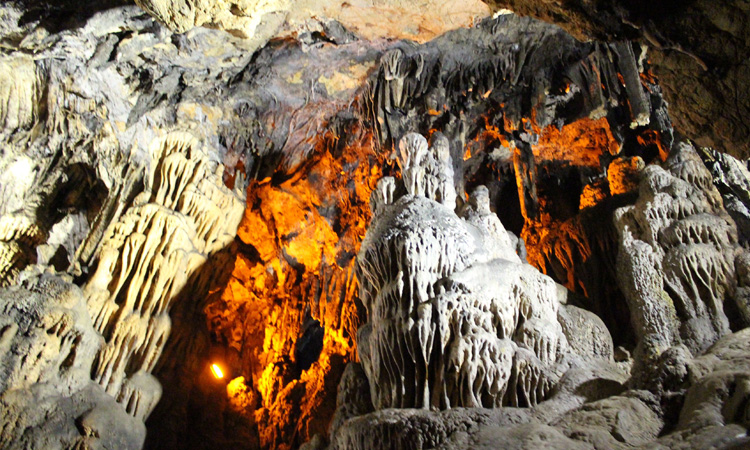
Bulak Cave
Situated within the domain of Karabük's Bulak Village, the Bulak (aka Mencilis) Cave also has borders with Safranbolu district. The cave is 6,5 km long and its entrance is on crag.
2,5 km of the cave has been mapped and a 380 meter long part has been opened to tourism thanks to electrification and a walking parkour. The cave is still hydrologically active and was officially registered as 'Natural Asset' with its marvelous stalactites and dickites.
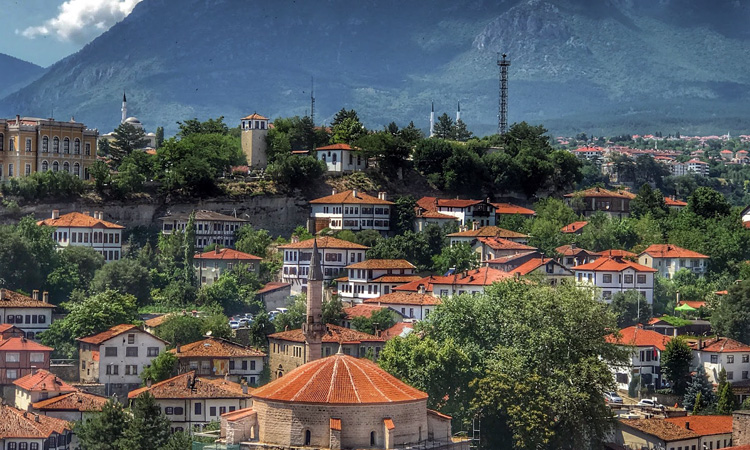
Hıdırlık Hill
One of the best places to overview the city, Hıdırlık Hill is known to be the area where Turks first settled when they arrived to Safranbolu. It's also known that rain prayers and Hıdrellez celebrations were held here.
This is the place to enjoy Safranbolu's splendid landscape with its famous historical mansions, its cobblestone streets and the nature surrounding the city.
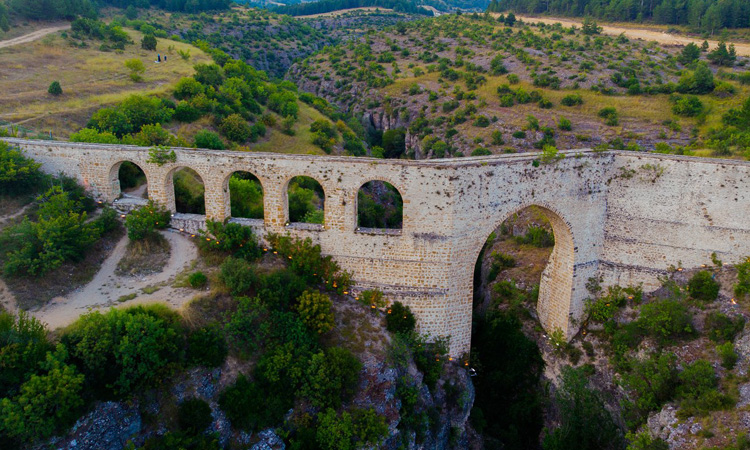
İncekaya Aqueduct
When exactly the aqueduct was built is still unknown but it was renovated and reintegrated to the city by Sadrazam İzzet Mehmet Paşa. The aqueduct is 116 meter long and approximately 60 meters high and is architecturally valuable. The part composed of 5 arches is completely made of stone and brickdust mortar. The width is 2,5m at the parts above the ground and 1,2m above the stream.
The aqueduct has 3 winds to balance the water flow velocity. The water passes through a canal to reach the balance tower, completely made of stone, situated in Asmazlar Mansion's yard where it is distributed to the fountains throughout the city. This water is colloquially called 'Pasha water'.
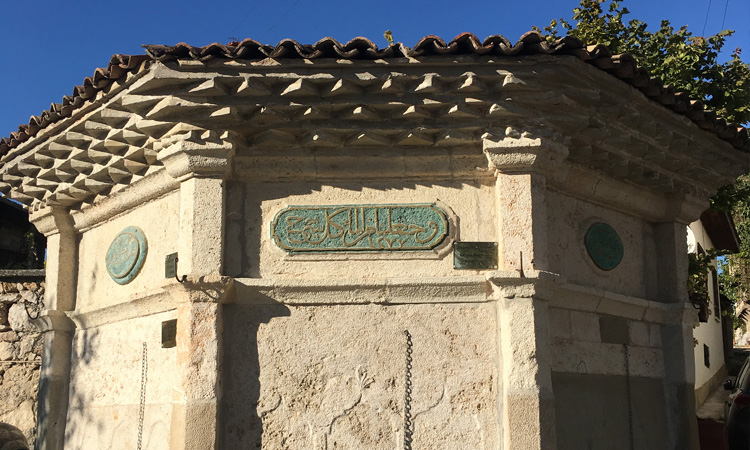
Yörük Village
Yörük Village is like a miniature of Safranbolu. It has been declared an urban protected area and conserved by the Ministry of Culture and Tourism in 1997 for being an authentic Turkmen village.
According to the myths, the village may be founded by members of Karakeçili tribe and members of Taraklı tribe. Nomad communities living around Safranbolu in the sixteenth century were called 'Yörükhan-ı Taraklı' or 'Yörükhan-ı Taraklıboru'.
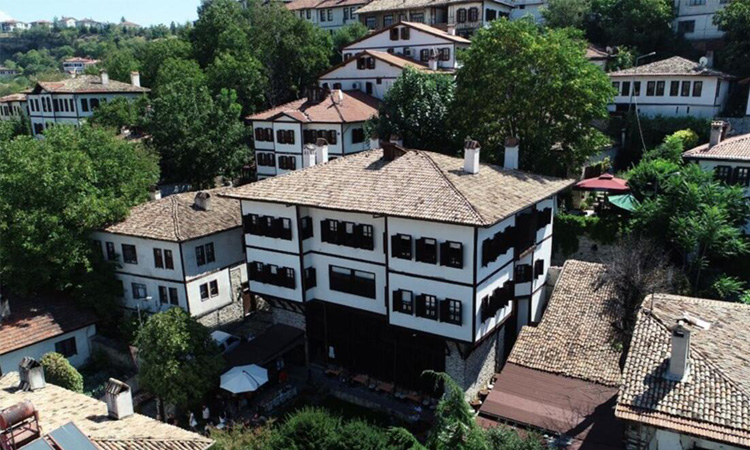
Quaimaquams' House
Quaimaquams' House was built in the early nineteenth century. It is the most important example among Safranbolu houses to reflect Turkish society's past, culture and ways of living as much as their technology during the eighteenth and nineteenth centuries.
Its owner was Hacı Mehmet Efendi, commandant of Safranbolu quarter. He was known as 'Kaim-Makam' for his grade of lieutenant colonel which is why his family and their house were called Quaimaquams' House. It was nationalized in 1979 and opened to the public in 16/12/1981 as a Centre of Education.
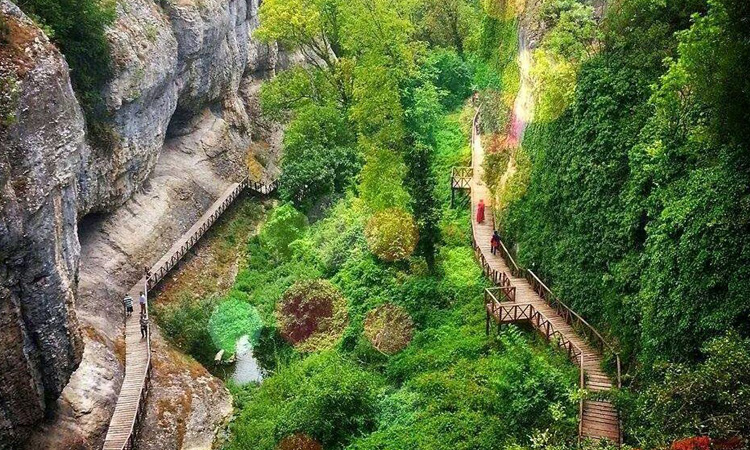
Horma Canyon
Situated in Pınarbaşı district, 3 km away from the district center.Horma Canyon reveals western blacksea's incredible beauty and is a must-go with its natural richness. Zarı Creek, coming from the Ilıca Falls, flows within the canyon.
A 3km long boardwalk makes it easy to walk in the midst of the nature. Horma Canyon, being a natural aquarium, is worth to see with its huge stone nesses and endemic plants.